Hi everyone! I have an almost 1 and a half year old eastern/dalmatian hermann's tortoise and I was wondering if anyone here could help me out. Dash is my very first pet, I love him (or her!) with all my heart and I just want to make sure I'm giving him the best life I can.
Although i did extensive research before I got him i'd actually never seen a baby hermann's tortoise in person before. I knew all about severe pyramiding but I honestly didn't notice his when i first got him at 7 months old. I genuinely thought that's what tortoises are supposed to look like, and surely since I got him from the best reptile shop in the county, he couldn't possibly already be pyramiding, right? The thought didn't even enter my mind until he started growing like crazy and it became more bumpy and noticeable.
I first got Dash at 39 grams, 5cm SCL. That made him a 0.312 on the Jackson ratio, which is pretty severely overweight. 9 months later, he is 122 grams, 7.9cm SCL and 0.247 on the ratio! So still a little heavy but he does have pyramiding and i think I'm doing okay even though i did overfeed him for the first couple of months (beginner's mistake).
I'm gonna put a few pictures down below to compare what he looked like at 7 months old (first 5 photos) and what he looks like now. Is the pyramiding getting worse? It seems to be smoothing out really well in the front but his vertebral scutes and towards the back look pretty bumpy. He has an extra costal scute on his left back side that looks particularly bad. Is his new growth smooth and is he growing too fast? I'm honestly very worried.
I'm also annoyed with the independent reptile shop who sold to me. They told me to soak him once a week at 7 months old, which i immediately knew was wrong. Looking back at the photos now it's very clear that Dash wasn't properly taken care of since hatching. I live in Ireland which is quite a small place so unfortunately i didn't have much choice in breeders/reptile shops, but this was meant to be the best. I guess i just need some reassurance that I'm doing right by him now because I've been very stressed out since i noticed all this!
Although i did extensive research before I got him i'd actually never seen a baby hermann's tortoise in person before. I knew all about severe pyramiding but I honestly didn't notice his when i first got him at 7 months old. I genuinely thought that's what tortoises are supposed to look like, and surely since I got him from the best reptile shop in the county, he couldn't possibly already be pyramiding, right? The thought didn't even enter my mind until he started growing like crazy and it became more bumpy and noticeable.
I first got Dash at 39 grams, 5cm SCL. That made him a 0.312 on the Jackson ratio, which is pretty severely overweight. 9 months later, he is 122 grams, 7.9cm SCL and 0.247 on the ratio! So still a little heavy but he does have pyramiding and i think I'm doing okay even though i did overfeed him for the first couple of months (beginner's mistake).
I'm gonna put a few pictures down below to compare what he looked like at 7 months old (first 5 photos) and what he looks like now. Is the pyramiding getting worse? It seems to be smoothing out really well in the front but his vertebral scutes and towards the back look pretty bumpy. He has an extra costal scute on his left back side that looks particularly bad. Is his new growth smooth and is he growing too fast? I'm honestly very worried.
I'm also annoyed with the independent reptile shop who sold to me. They told me to soak him once a week at 7 months old, which i immediately knew was wrong. Looking back at the photos now it's very clear that Dash wasn't properly taken care of since hatching. I live in Ireland which is quite a small place so unfortunately i didn't have much choice in breeders/reptile shops, but this was meant to be the best. I guess i just need some reassurance that I'm doing right by him now because I've been very stressed out since i noticed all this!
Attachments
-
 Screenshot_20211229-205537_Video Player.jpg179.2 KB · Views: 21
Screenshot_20211229-205537_Video Player.jpg179.2 KB · Views: 21 -
 Screenshot_20211229-205719_Gallery.jpg327.1 KB · Views: 19
Screenshot_20211229-205719_Gallery.jpg327.1 KB · Views: 19 -
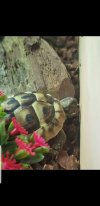 Screenshot_20211229-205732_Gallery.jpg200.1 KB · Views: 24
Screenshot_20211229-205732_Gallery.jpg200.1 KB · Views: 24 -
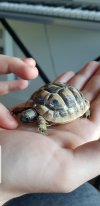 Screenshot_20211230-164000_Gallery.jpg179.5 KB · Views: 24
Screenshot_20211230-164000_Gallery.jpg179.5 KB · Views: 24 -
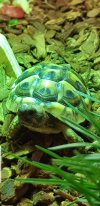 Screenshot_20211230-163856_Gallery.jpg328.7 KB · Views: 25
Screenshot_20211230-163856_Gallery.jpg328.7 KB · Views: 25 -
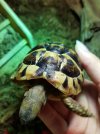 20211230_162955.jpg1.3 MB · Views: 20
20211230_162955.jpg1.3 MB · Views: 20 -
 20211230_162833.jpg1.4 MB · Views: 19
20211230_162833.jpg1.4 MB · Views: 19 -
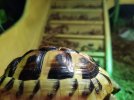 20211230_162910.jpg1.3 MB · Views: 18
20211230_162910.jpg1.3 MB · Views: 18 -
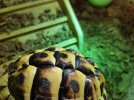 20211230_162924.jpg1.4 MB · Views: 19
20211230_162924.jpg1.4 MB · Views: 19 -
 20211230_162849.jpg1.3 MB · Views: 18
20211230_162849.jpg1.3 MB · Views: 18 -
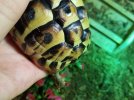 20211230_162936.jpg1.2 MB · Views: 18
20211230_162936.jpg1.2 MB · Views: 18 -
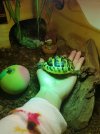 20211229_153112.jpg1.5 MB · Views: 24
20211229_153112.jpg1.5 MB · Views: 24